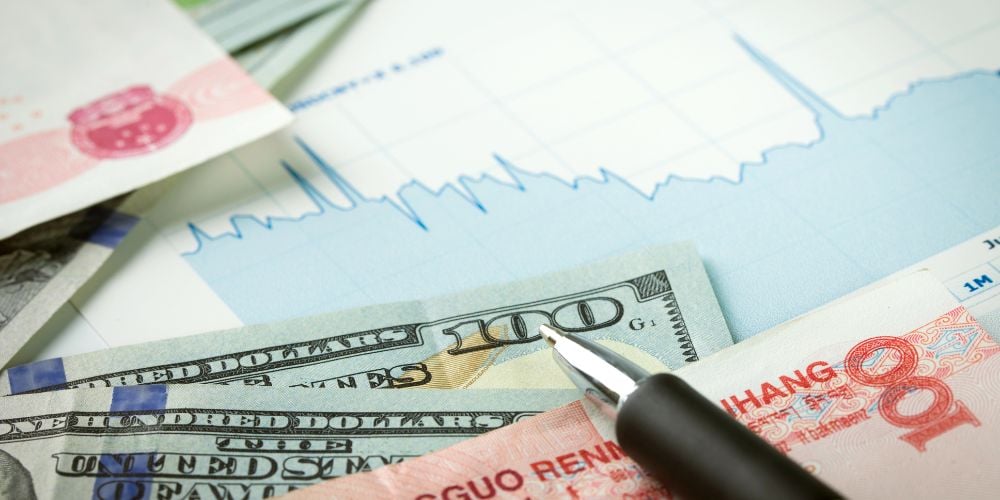A recession is a significant decline in economic activity spread across the economy, lasting more than a few months. It is visible in industrial production, employment, real income, and wholesale-retail trade. So, are recessions cyclical?
The debate on whether these downturns are cyclical or follow a definite pattern sparks curiosity and concern among economists, policymakers, and the public alike.
Understanding Economic Cycles
Economic cycles represent the ebb and flow of an economy’s growth and contraction, a process often described using the metaphor of seasons. Just as nature experiences spring (growth), summer (peak), fall (decline), and winter (trough), an economy goes through a similar sequence.
During expansion, businesses thrive, employment rises, and consumer spending increases, leading to an overall uplift in economic activity. This period culminates in a peak phase, where growth reaches its zenith.
Subsequently, the contraction phase sets in, marked by slowing industrial production, job losses, and decreased consumer confidence, which may then bottom out in a recessionary trough before the cycle renews.

Historical Patterns of Recessions
History shows us that recessions have appeared with some regularity. For example, since World War II, the United States has experienced several recessions at somewhat regular intervals.
The National Bureau of Economic Research has data on business cycles that reveal discernible patterns over the years.
The Business Cycle and Recessions
The business cycle is the ups and downs economies experience over time. It comprises four stages: expansion, peak, contraction, and trough. Each phase has unique attributes that signal its presence.
The Expansion Phase
During expansion, the economy grows. Signs of growth include an increase in jobs, consumer spending, and production. This phase lasts until the economy hits its peak.
The Peak Phase
Here, the economy is at its highest point of growth. However, it’s unsustainable in the long run. As expansion slows, economies prepare for a downturn.
The Contraction (Recession) Phase
A recession marks a period where the economy starts to decline. This phase sees falling output, rising unemployment, and declining confidence.
The Trough Phase
A trough occurs when the economy hits its lowest point before starting to recover. We measure recovery through a rise in production, employment, and confidence.
Factors Influencing Recessions
Various factors can trigger a recession. External shocks, such as oil prices or global events, can cause widespread economic ripple effects.
Internal financial imbalances, like credit cycles or asset bubbles, are also influential.
Lastly, policy responses by governments and central banks often shape the severity and duration of recessions.
Are Recessions Cyclical?
Various economic theories try to explain recessions. Keynesian theories suggest that demand shortfalls lead to downturns. Austrian School proponents point to misallocated capital and credit as culprits. Monetarists focus on the role of monetary policy, while Real Business Cycle theorists see technological changes as critical.
Predictability of Recessions
Despite patterns, predicting recessions is tough. Economists use several indicators to forecast downturns with mixed success. These indicators include trends in gross domestic product (GDP), unemployment rates, and inflation data.
Globalization and Its Effect on Recession Cycles
The world economy’s interconnectedness influences the cyclical nature of recessions. Crises in one part of the globe can lead to widespread effects.

Measures to Mitigate the Impact of Recessions
To combat recessions, governments may use various policies. Fiscal policies include government spending and tax adjustments. Central banks may adjust interest rates and inject liquidity into the economy.
The Psychological and Social Impact of Recessions
Recessions affect employment rates, leading to job loss and reduced income. They also have broader social impacts. For instance, higher unemployment can lead to increased social unrest.
Pro Tips: Anticipating a Recession
Businesses and investors can take steps to prepare for recessions. One strategy is to diversify investments. Monitoring key indicators can help in planning and strategizing for the economic downturns.
Frequently Asked Questions
How long do recession cycles typically last?
Recession cycles vary, but typically they last from a few months to over a year, depending on various economic factors and policy responses.
Can government policy effectively prevent recessions?
Government policies can mitigate but not always prevent recessions, as they aim to manage economic cycles and soften downturn impacts.
Are recessions always predictable?
Recession predictions are challenging, and while economists use indicators to forecast downturns, exact timing is hard to pinpoint.
How do recessions affect the average consumer?
Recessions often lead to job losses, decreased consumer spending, and a general decline in economic confidence, affecting everyday financial decisions.
Will recessions become more or less frequent in a globally connected economy?
Global connectivity can amplify economic disturbances, potentially leading to more frequent but also more globally synchronized recessions.
Conclusion
Recessions appear to have a cyclical nature, with historical patterns showing regular intervals of economic downturns.
However, the exact timing and severity of each recession are unpredictable. Proper understanding and preparedness are key for individuals and governments to navigate through these challenging periods.


 Tags:
Tags:










